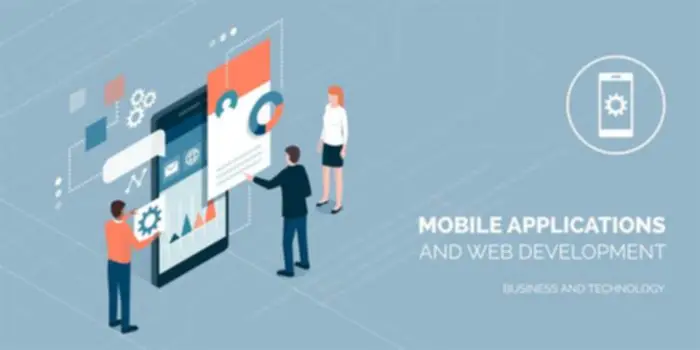Breaking up our nebulous in-process state into better-defined states can give everybody more visibility into the strengths, weaknesses, and general health of the team. Uses and function of ScrumbanScrumban is a combination of Scrum and Kanban together with lean (a method scrumban board for minimizing waste). Scrumban can be utilized in each the development of products and of their maintenance.
How Does Scrumban Differ From Scrum And Kanban?

The framework offers the choice for iterations of various lengths primarily based on the complexity of the work and the team’s capacity. Finally, SENLA presents the flexibleness to customise our efforts to your needs in brief order. This includes team size changes, added IT services or safety, and dynamic on-site or remote work conditions. You enjoy the advantages of an ongoing professional Chatbot relationship with an experienced and multi-talented team who dedicates their time and vitality to your organization’s success.
The Final Word Information To The 5 Key Scrum Occasions
Ultimately, the “finest” methodology is dependent upon factors like team measurement, project type, and organizational culture. Scrumban provides a flexible middle ground, however pure Scrum or Kanban might sometimes be preferable. The key’s to gauge your particular needs and context to determine which strategy might be best. Scrumban’s hybrid method provides that candy spot between the inflexible Scrum and flexible Kanban methodologies. While it won’t go properly with every group for each project, it’s a stable selection most of the time.
Finest Scrum Instruments For Project Management In 2025
By demystifying Scrumban and exploring its ideas, practices, and benefits, you now have the ultimate information to mastering agile hybrid methodologies. So, go ahead, embrace Scrumban, and take your tasks to the subsequent degree of efficiency and adaptableness. Kanban practices play a significant role in Scrumban, notably when it comes to visualizing and managing work. The use of Kanban boards permits groups to visually characterize the circulate of duties, making it easier to establish bottlenecks and optimize the workflow.

Whether you’ve a single in-progress lane or several lanes in between ready and accomplished, you may must set a WIP limit. Limiting the number of in-progress duties focuses your group’s efforts and prevents them from being overwhelmed and scattered. Staying targeted on a smaller number of tasks will increase your productivity and promote more fast progress toward clearing your backlog. However, this stark contrast between types is precisely what Scrumban was created to take advantage of. Scrumban pulls from the structure of Scrum and the flexibleness of Kanban to create an agile methodology of improvement that features one of the best aspects of each. It may be good for some groups, nevertheless it will not be an excellent fit for others.
Scrumban is a hybrid project administration approach that blends Kanban and Scrum ideas. It combines the visible administration method and adaptability of Kanban with the structured framework of Scrum. It provides groups visibility into work progress through Kanban boards and enables them to swiftly modify to shifting priorities and customer wants. Time-boxed iterations, known as sprints in Scrum, provide a structured framework for improvement in Scrumban. These mounted time periods create a sense of urgency and focus, driving teams to ship incremental worth persistently. By breaking down work into manageable chunks and setting clear targets for each iteration, groups can maintain a gradual tempo of progress and respond promptly to suggestions.
But as Andrew Stellman mentions in his e-book, that makes little sense because the two strategies don’t have the same objective. Scrum offers with project administration and successful product supply, whereas Kanban is all about continuous process enchancment. A Scrumban template is a reusable framework for Agile teams who use the Scrumban methodology. Scrumban is a hybrid of each the Scrum methodology and the Kanban methodology.
- First off, it supports the Scrum backlog method, which is crucial for planning, prioritizing, and allocating work.
- It enhances productiveness, especially in complicated initiatives, and fosters higher team interaction throughout conferences.
- Scrumban provides the structure of Scrum with the flexibleness and visualization of Kanban, making it a highly versatile method to workflow management.
- It works properly for groups transitioning from Scrum to Kanban or those seeking a balance between structure and adaptability.
This might occur when a shift in priorities moves a characteristic into a new sprint, be it an earlier or later launch. These conferences should not take any longer than 15 minutes, and ideally, they’ll be closer to five minutes. They’re meant to be fast progress updates to maintain everybody on monitor, not deep dives. Serious problem-solving and facet discussions must be done at another time.
It provides them an opportunity to mirror on their processes and seek ways to enhance them. Each iteration usually ends with a client evaluation and release, during which you collect suggestions and possibly even new requirements for the the rest of the project. After that, the staff goes back to the Product Backlog to continue working on the project. Since each column has a sure WIP limit, to start engaged on one other card, a team member has to make room in the energetic column. You can also schedule Kaizen events to discuss work course of improvement and resolving issues. This kind of occasion is elective (like most Agile meetings in Scrumban), but it can be an excellent studying alternative for the team.
Improved Flexibility — It offers benefits of both techniques however only a few of the constraints of either. This results in more flexibility for teams to construction their efforts in ways that make sense to them. Also, the system includes more innate agility in case of changing requirements or priorities. These vary from critical adjustments in Сlient expectations to an employee falling unwell and staying out of work for a couple of days.

In Scrumban, there aren’t any forms of “story points”—a strategy that assigns points to tasks primarily based on the estimated time or effort each task will take. Instead, the Kanban board ought to solely have a set quantity of playing cards on the board to stop overwork. This is commonly referred to as work-in-progress limits or WIP limits. The Scrumban group decides as a bunch how many cards can be in what stage at one time, in order that the team isn’t overwhelmed with duties. If there are not any more playing cards on the board, team members will pull cards from the product backlog. Ideally, the staff evaluations the cards on the board every week and provides cards from the product backlog primarily based on that sprint’s aim.
Start with considered one of Jira’s dozens of pre-configured templates, and customize your project around any team structure, workflow, or agile methodology. Jira makes it easy to prepare work, stay aligned, and build better merchandise. As mentioned, the inspiration of this workflow methodology mimics a Kanban board. Scrum techniques concentrate on tasks divided into well-defined, time-based sprints.
Scrumban is finest suited to environments which are fast-paced and flexible. Startups and groups willing to forego conventional constructions and guidelines in favor of pace and effectivity will discover Scrumban appealing. Because there aren’t any predetermined planning intervals in Scrumban, you may have to resolve what parameters will set off an on-demand planning event.
Transform Your Business With AI Software Development Solutions https://www.globalcloudteam.com/ — be successful, be the first!